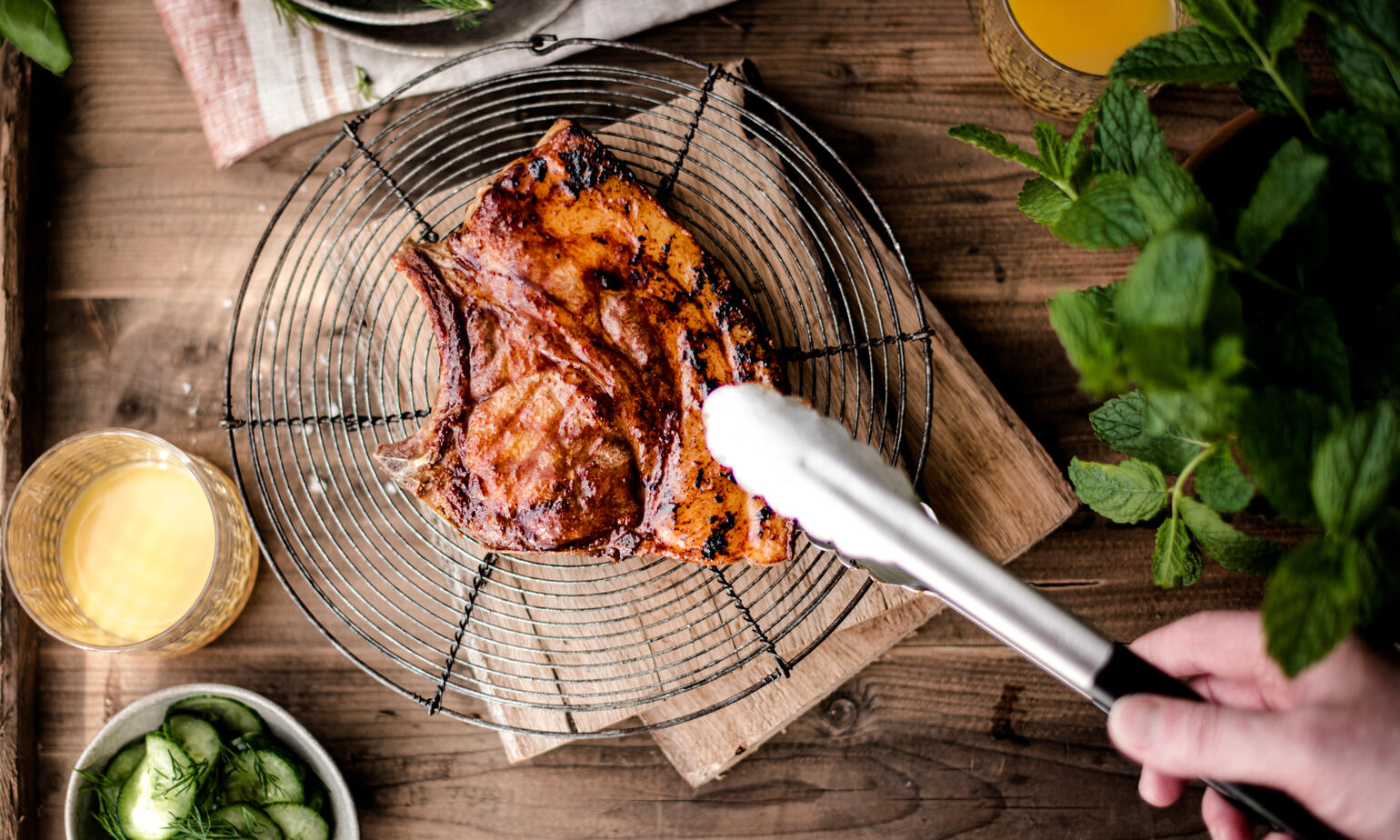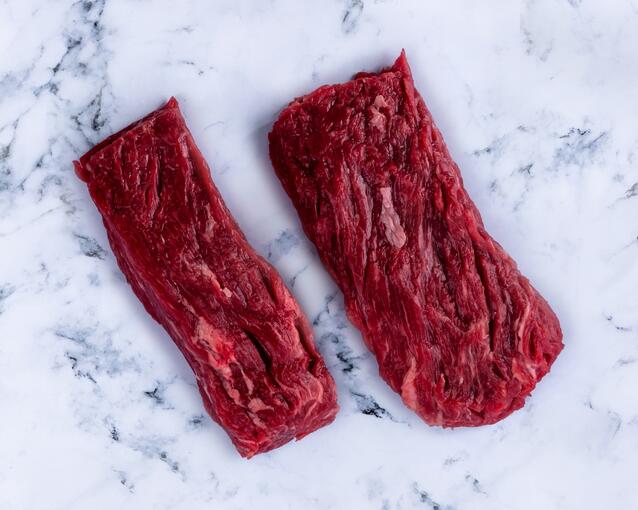Our Alternative Barbecue Feasts

Barbecue season is when our meat comes into its own. With our herds and flocks having roamed and matured on lush pastures in the Dales and Fells, the meat boasts natural flavour, while the dry aging techniques used by our Master Butcher, ensure meltingly tender finishes.
Though we stock classic barbecue cuts, we're also committed to stocking a range of alternative cuts, to ensure a variety of flavours and textures, whatever the size of your barbecue feast. Next to each cut you can find cooking tips, and a recipe written by Jeff Baker, our Executive Chef.

Bavette Steak also known as Flank Steak is a great value cut, perfect for the BBQ to deliver the characteristic flavour of our grass fed beef, sourced from grass fed beef herds. Very thinly cut by our butchers, Bavette Steaks are best suited to being marinated first, barbecuing and then serving rare. As they are cut thinly, they wont take long to cook - so be careful not to over-cook.

Similar in appearance to Beef Short Ribs, Jacob's Ladder boasts tender rib beef, and is typically meatier than their pork counterparts. As such they're great for marinating overnight and slow-cooking on the barbecue. With deep flavour characteristic of our beef on the bone, the rich qualities of this beef reflects the grazing of our grass fed cattle on lush pastures in the Yorkshire Dales and Cumbria.

A great value joint taken from the breast of the beast, and well suited to long, slow cooking or marinating and barbecuing for meltingly tender beef. Left flat by our Master Butcher, this is sourced exclusively from grass fed herds in the Dales and Fells to promise only the best flavour and only dispatched after being dry aged for at least 28 days in our dedicated dry aging room, and judged ready by our Master Butcher.

A modern cut complete with excellent marbling. Cut from between the neck and saddle, this small cut is ideal for small joints suited to slow cooking, grilling, or popping on the barbecue. Be sure to serve pink.

The talk of the table, a Spatchcock chicken brings something different to a discerning Barbecue, though is equally at home as a roast. A traditional Butchery method, Spatchcocking - or Butterflying - involves the skilful removal of the chicken's backbone to flatten the bird. This makes for shorter cooking times, and more surface to season.
Jeff Baker's BBQ Tips
With summer around the corner and (hopefully) glorious weather on the way, here are my BBQ tips and techniques for you to take full advantage. These guidelines are particularly well suited to our meats, as it helps preserve the tastes and textures of our rare and native breeds.
An electric or gas BBQ may take up to 20 minutes to preheat and a charcoal BBQ needs to be heated until the coals are covered with a layer of ash (approx. 45 minutes). Using charcoal rather than briquettes is better; it heats more evenly and has a better, more natural aroma.
For the best results, treat the meat you barbecue outdoors with the same respect as when you cook in your kitchen. Be sure to allow the meat to come to room temperature for at least 20 minutes, before cooking while brushing the meat with oil will help the searing process and prevents sticking.
Careful seasoning is necessary. The meat could be marinated beforehand or sprinkled with herbs and pepper. Season with salt at the very last moment only, as salt will draw out juices and prevent the meat from browning properly.
Cook your steaks, bangers, or burgers nice and steadily until rich, aromatic, and browned, then turn gently just once. Use long handled tongs rather than a fork that may pierce the meat and allow valuable juices to escape.
It's all too easy to overcook on a barbecue, leading to charred, leathery, or dry meat. We don't want excessive flames as this turns the oil to carbon, leaving an acrid taste from the meat. To ensure even cooking use the 60/40 method. Cook the meat for 60% of the time on the first side, then turn and cook for the remaining 40%. Take care: As soon as the meat browns it must be moved further away from the heat source so that the inside can cook before the surface burns, (the exceptions are thin cuts such as mini-steaks and medallions). Raise the rack so that it is about 30cm above the charcoal - at this height the temperature is just right.
Knowing the meat is how you like it is the most difficult part of BBQ. I'd recommend investing in a good thermometer and following my basic rules for temperature control.
Beef | medium rare 54°C
Lamb | pink 58°C
Pork | juicy 65°C
Poultry | safe 75°C
Bangers | 75°C
Once the meat is cooked to your liking it must be rested. During resting, the temperatures will continue to rise as the juices in the middle move to the outside and it becomes warm, moist and tender all the way through. To rest your meat, place it on a rack so it doesn't lie in its own juices. Cover with foil and leave in a warm place for up to 20 minutes. Remember, it is always better to over-rest meat than to under-rest it
